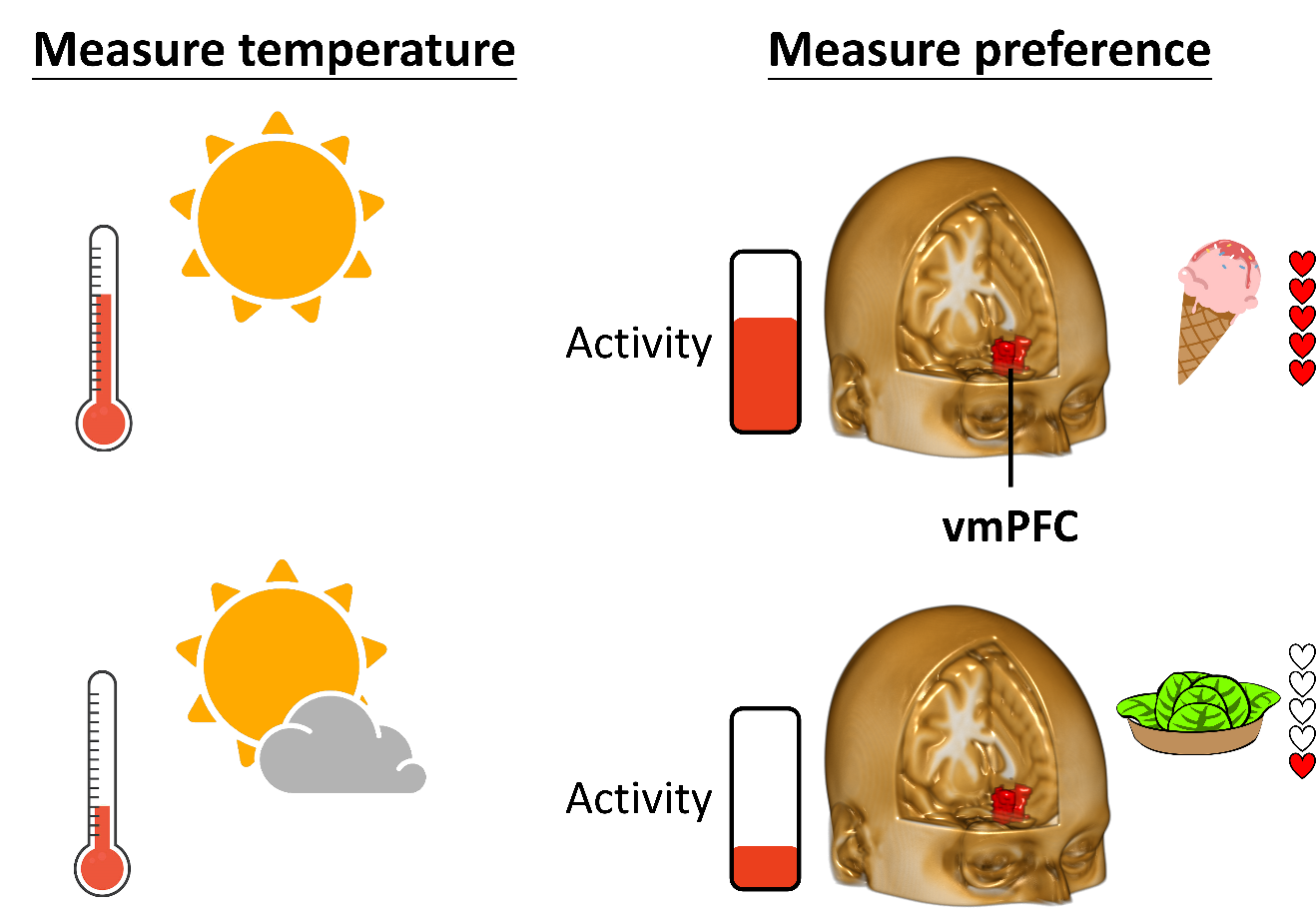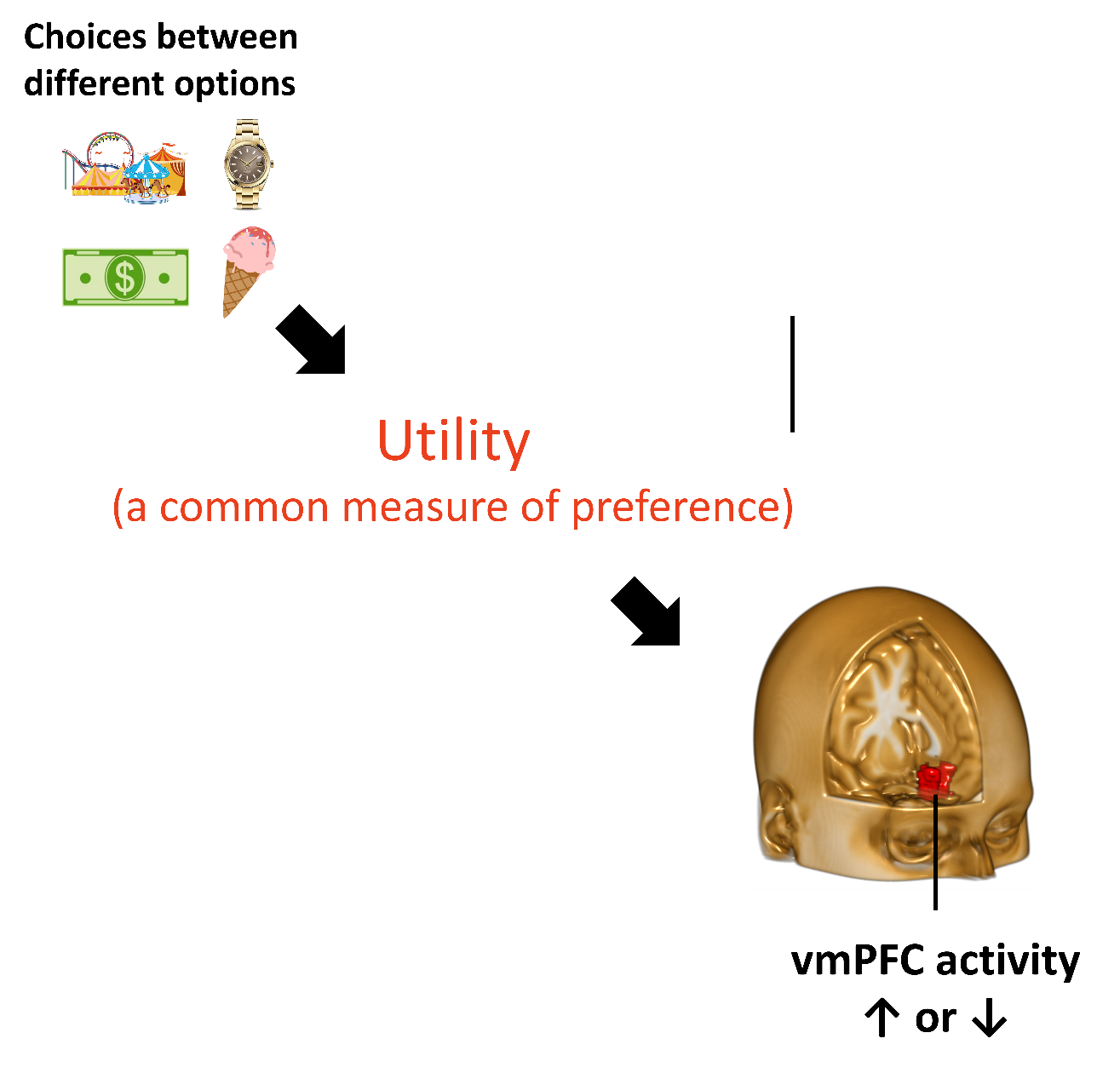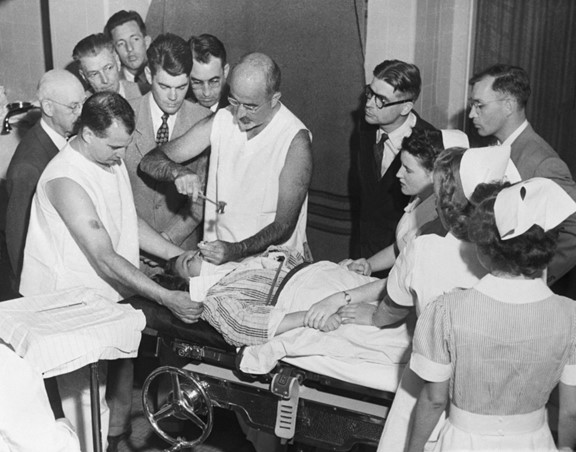Should I go out today? Should I accept the job offer? Should I marry this person? Every day, we make decisions on trivial and important matters through our brain. The brain is the most energy-demanding organ of our body. We also have the most complex brain compared to other animals, especially in a region called the prefrontal cortex (approximately the front 30% of our brain). Having a complex brain allows us to make various types of decisions that are concrete or abstract, short-term or long-term, personal or interpersonal. Recently, neuroscientists, psychologists, economists, and computer scientists have started to work together in hopes to understand the biological basis underlying the mental processes of decision making. Unveiling these brain mechanisms will help us not only guide better decision making, but also shed light on how mental disorders with decision making impairments develop and persist.
There are many interesting cases that demonstrate the link between the brain and mental processes. One example is about a patient Henry Molaison (also known as HM). In 1953, he received a surgery to remove his hippocampus, a part of the brain with unclear functions in those days, to treat his severe epilepsy problem. Although his epilepsy was largely improved after the surgery, he acquired a new problem in that he was not able to form some kind of new memories. In the remaining 55 years of his life, unfortunately, he could only remember things that happened before his surgery in 1953. Another example is about a railroad worker Phineas Gage. On 13 September 1848, an accident happened that an iron rod penetrated his head from his cheek (Fig 1). This caused a large area of damage in the prefrontal cortex, a part of the brain that we will discuss extensively in the rest of this article. Surprisingly, Gage survived and remained intact in his intelligence. However, he then showed significant personality changes. For example, he used to have good interpersonal relationships, but after the accident his colleagues found him hard to comprehend and no longer trustworthy. These examples demonstrate the interrelationships between the brain and mental processes and inspire the development of contemporary neuroscience, including brain processes of decision making.

Fig 1. Illustration of Phineas Gage's damage. Credit: Wikimedia Commons.
How do we measure decision making?
Decision making can be understood as a mental process of comparing different options. We consider how much we prefer an apple to an orange and pick the one that we like more. To study decision making, a critical question is how preferences are quantified and measured. This is similar to nutritionists that need to quantify food energy level in calories and use calorimeters to measure it. This is also similar to physicists that need to quantify temperature in Celsius and use thermometers to measure it. In a similar manner, scientists studying decision making also need to study and quantify people's preferences and find ways to measure them. This idea began to emerge in the 19th century spearheaded by the English philosopher Jeremy Bentham, who suggested that, though people's preferences are unlike physical quantities such as calories and heat, at least we can quantify it using an abstract term called “utility”. By applying the concept of utility, we can begin to communicate the quantity of pleasure or pain that a decision will bring about. There are many ways that economists apply to actually measure utility, such as Paul Samuelson's approach of “revealed preference” – option A's utility is greater than option B's, because it so happened that Mr X chose A over B. The details of utility theories in economics are beyond the scope of this article, but generally speaking, having an estimate of utility has the advantage of allowing economic activities, such as individual's choices or overall market activities, to be quantified and predicted.
Can we detect decision making from the brain? The prefrontal cortex
Although people's preferences during decision making can be highly abstract, neuroscientists ask whether we can search for the physical presence of preferences in the brain. Most neuroscientists consider that our mental processes and our behaviours are the results of the interactions of our brain cells, often in the form of electrical events. Perhaps some of these electrical events may reflect people's preferences. If we are able to identify these specific electrical events and to measure them, we will be able to physically quantify people's preferences, as if using a thermometer to measure temperature. This mission has been empowered by a brain imaging method developed in the 1990s, called functional magnetic resonance imaging (fMRI). Before that, research on human brain functions had to rely on studying neurological patients who unfortunately had part of the brain damaged or recruiting volunteers who are happy to receive a small dose of radioactive substance to reveal their brain activity. The development of fMRI provides a non-invasive solution for researchers to study the intact human brain without causing any damages to it – without even injecting chemicals or radioactive substances in most cases. By using fMRI, researchers can look at how the brain behaves when people are undergoing different mental processes, such as decision making.
Since then, many experiments have been conducted by asking volunteers to make choices while their brain activities are measured by fMRI. Interestingly, these experiments often show that some regions of the brain are particularly active when they are given options that the volunteers like (such as a colourful ice cream) and the same regions become inactive when they are given options that they dislike (such as a boring salad). Thus, it seems that these parts of the brain provide a measure of people's preferences during decision making. One of these brain regions that is of particular interest is the ventromedial prefrontal cortex (vmPFC) – if you point your finger at the midpoint between your eyebrows, the vmPFC is located beneath your finger. This phenomenon is similar to an alcohol thermometer where the red bar expands in a hot environment and shrinks in a cold environment. The height of the red bar is a measure of the temperature of the environment and, similarly, the activity of the vmPFC may be a measure of an individual's own preference of the options (Fig 2).

Fig 2. Activity of ventromedial prefrontal cortex (vmPFC) reflects people's preferences, which is analogous to a thermometer that measures temperature.
Sometimes people make decisions between options that are very different, such as whether to buy a watch or to visit an amusement park. One key feature of utility is that it is a common measure for all sorts of choices such that we can compare our preferences of the watch and the park and choose between them. Again, this is similar to a thermometer that can measure temperature no matter it is from the environment, a human body or a machine. Therefore, the physical manifestation of utility in the brain should reflect preferences of any kinds of options. Over the last 15 years, neuroscientists notice that the vmPFC activity is related to our preferences of a wide range of options, such as food items, monetary rewards, financial investments, accessories, artwork, attractiveness of people's faces, tool usefulness, etc (Fig 3)… These findings suggest that the vmPFC has a role of reflecting preferences in general.

Fig 3. Utility as a common measure of preferences to different kinds of options, is reflected in vmPFC activity.
It is worth noting that decision making is a highly subjective process. For example, if a shirt is sold at $200, some people may think that it is a good deal and purchase it, while others may think that it is not worth the price. Interestingly, this subjectivity of people's preferences can also be reflected by vmPFC activity. For instance, one experiment conducted by Plassmann and colleagues asked volunteers to taste wine while their brain activity was monitored by fMRI (Fig 4). When these volunteers were told that the wine was an expensive one, they were more likely to report that the wine tasted better and at the same time their vmPFC became more active. On the contrary, when the exact same wine was labelled with a poorer price, the same people instead thought that the wine tasted worse and the vmPFC became less active. Experiments of such kind demonstrate that the vmPFC reflects people's subjective preferences during decision making.

Fig 4. Activity of vmPFC reflects people's subjective preferences – when the same wine is labelled with a high (low) price, people report higher (lower) preference and vmPFC becomes more (less) active.
The unique human prefrontal cortex
So far, we have explained the importance of the vmPFC to decision making. In fact, the prefrontal cortex, which is approximately the front 30% of the human brain that contains the vmPFC, is particularly developed in human. Perhaps that is the reason why we are capable of making choices that are highly complex and abstract, compared to other animals. Some neuroanatomists are specifically interested in comparing the anatomy of human brain with other animals – sometimes with our close primate relatives (e.g. chimpanzees and monkeys) and other times with more distant species (e.g. rats and mice). By making such comparisons, it may be possible to tell the specific developments of the human brain that allow us to produce human-specific behaviours, such as making abstract choices, being particularly flexible to changes, or capable of producing language.
Neuroanatomists found that the brains of human and our primate relatives all share a “granular prefrontal cortex”. The granular prefrontal cortex is the part of the prefrontal cortex that contains a layer of tiny and compact granule cells. Although the precise functions of these granule cells are unclear, loosely speaking the presence of these densely packed cells allows the brain to engage in more complex processing and empower high-order mental processes. Interestingly, by comparing the brains of different animal species, it is clear that human has the greatest proportion of granular prefrontal cortex, while its proportion is smaller in monkeys and even absent in non-primate species such as rats, mice, cats, etc... There are several interesting facts about the human prefrontal cortex:
- Our brain continues to develop after we were born. Compared with the rest of the brain, the prefrontal cortex takes the longest time to get fully mature – until we get into the age of around 20 years.
- The prefrontal cortex is also one of the earliest regions that begins to degenerate as we age.
- One part of the prefrontal cortex, namely the lateral frontal pole (FPl), is unique in the human brain. It is located under the skull approximately 2 cm above each of your eyebrows. Other animals, such as monkeys, rats and mice, do not have a similar FPl in their brains.
Why do we need to study the brain basis of decision making?
After all, why do scientists need to care about what is happening in our brain during decision making? Here we would like to explain this by a few examples.
Nobel Prize controversy
In 1949, neurologist António Egas Moniz was given the Nobel Prize for his development of lobotomy – a surgery that damages the prefrontal cortex for, hopefully, treating mental disorders. Dramatically, this was sometimes done in the surgeon's office by inserting a knife above the eyeball and cutting the prefrontal cortex – the very region that we now know is important to many higher-order mental processes, including decision making (Fig 5). Lobotomy was first performed in 1935, and became highly popular and praised in the 1940s as a “great treatment method” for mental illnesses. Although there were many notable side effects, including potentially sending patients into a vegetative state, Moniz believed that the procedure was effective and considered that reducing symptoms of mental illnesses were more beneficial.

Fig 5. A demonstration of lobotomy. Credit: BBC News.
One notable case of lobotomy was Rosemary Kennedy, a younger sister of the former United States President John F Kennedy. Due to complications at birth, Rosemary Kennedy displayed violent mood swings and seizures that prompted the arrangement of a lobotomy at the age of 23 in 1941. Following the surgery, Rosemary Kennedy could neither speak nor walk and displayed the mental capacity of a young child. Her side effects were so severe that the parents claimed that Rosemary Kennedy was “mentally retarded” rather than admitting to having underwent a lobotomy. Unfortunately, like many other cases of patients undergoing lobotomy, the side effects of personality change, apathy, and lack of emotional responses were only observed and documented following the irreversible nature of this surgery. It was not until the 1950s when medications for mental illnesses were developed, people became more concerned about the side effects of lobotomies and this procedure was thought by many as wildly unethical, leading to its eventual decline. Just a mere 70 years ago, the prefrontal cortex, including the vmPFC, was thought to be rather useless and that severing this structure seemed to be an appropriate treatment. Nowadays, our understanding of the brain clearly indicates that the human prefrontal cortex is a structure of great importance, such as its role in our decision making.
Psychiatry
In neuroscience, mathematical models or computational models are often applied to describe mental and brain processes. These models are useful for examining specific factors affecting how a decision is made and explain why different people may make a decision in different ways. These models could have important value to psychiatry and neurology. For example, after constructing a computational model that can mimic how different brain regions work during decision making, we can simulate how damages to certain brain regions may affect decision making processes. Constructing these models could help unveil the mechanisms behind how various brain structures contribute to the decision-making processes, and importantly may identify atypical decision-making behaviours displayed by individuals with mental disorders. Work in this direction can direct treatment practices through treatment landmarks to alleviate dysfunctional decision making that is observed in various mental disorders. More generally, knowledge in this area can then be used to cultivate optimal behaviours leading to smarter decisions.
Artificial Intelligence
Neuroscience has important contributions to the development of artificial intelligence (AI). For example, AI has been applied extensively to computer vision – the use of computer systems to interpret images or videos, such as face or fingerprint identifications. Developments of computer vision AIs were inspired by the understanding of how our brain sees things. Neuroscientists identified that our brain processes images in a hierarchical manner – it begins by processing simple visual features and gradually more complex and abstract features. This structure of hierarchical processing was applied by AI developers for different computer vision algorithms, such as the development of convolutional neural networks. Recent research suggests that AIs built upon the basis of human brain connectivity perform tasks more efficiently compared to other AIs. In a similar manner, it is possible that integrating the knowledge about brain mechanisms of human decision-making processes can contribute to AI development and vice versa.
Recent challenges and outstanding questions
Over the past three decades, neuroscientists have begun to understand some basic brain mechanisms of decision making. However, there are many outstanding questions that are yet to be answered. Our research team is currently working on some of these questions, such as the following.
- Sometimes people make choices that are irrational or inconsistent. Is it because our brain is imperfect or are there specific reasons why it may be beneficial to have such an “irrational” brain?
- It is important to remember that many animal species do not have a similar vmPFC in their brain, while they are still capable of making decisions to some extent. So why do we human need to have a vmPFC for decision making?
- Recently, a growing body of research suggest that vmPFC is not necessarily involved in all kinds of decisions. Our recent work demonstrates that this is true when people are asked to make a choice that has long-term impact (e.g. choosing a residential area that determines the subsequent flat options). Instead, these choices involve the FPl, which is a region that is unique in the human brain. Does our brain really involve a common utility measure and use that for making all kinds of choice?
- Can we see more everyday applications of these neuroscientific developments?
Authors:
Dr Bolton K H Chau, Associate Professor, Department of Rehabilitation Sciences, The Hong Kong Polytechnic University
Mr Chun-Kit Law, Postdoctoral Fellow, Department of Rehabilitation Sciences, The Hong Kong Polytechnic University
Mr Jing Jun Wong, Postdoctoral Fellow, Department of Rehabilitation Sciences, The Hong Kong Polytechnic University

